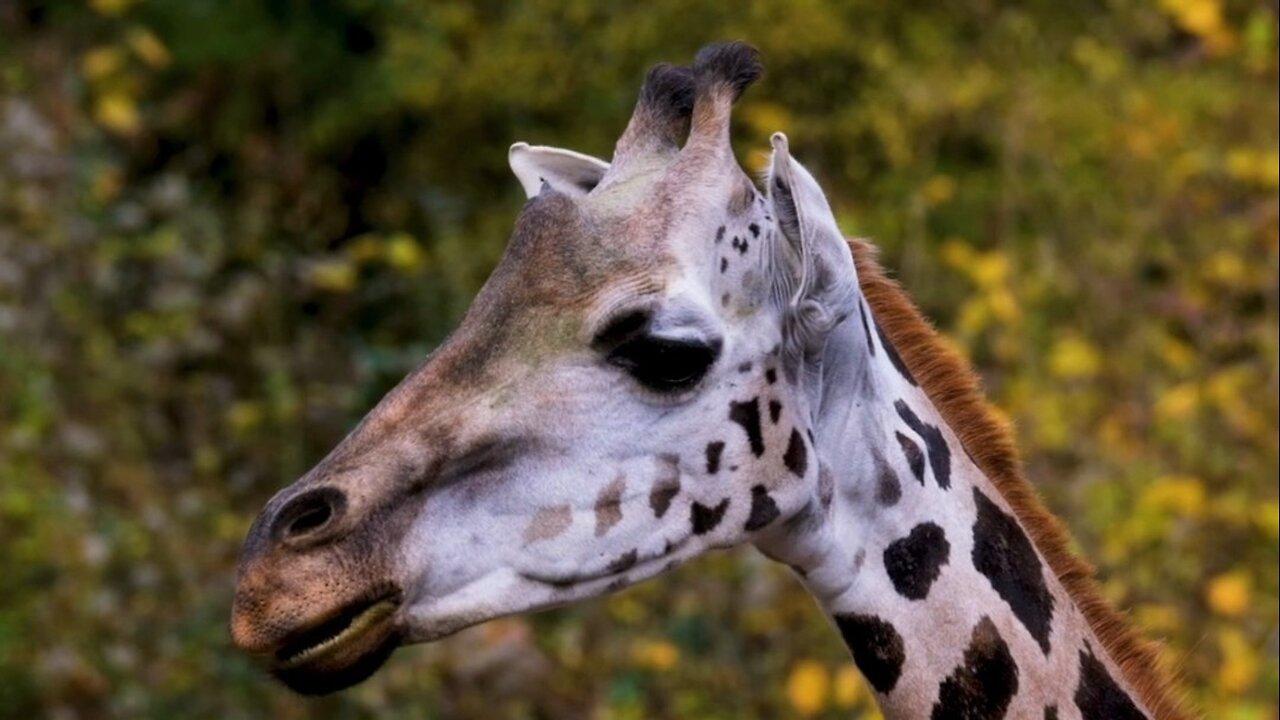
The Northern giraffe (*Giraffa camelopardalis*) is one of the four species of giraffes and is native to the savannahs, woodlands, and open forests of northeastern Africa.
It is a highly recognizable animal due to its towering height, long neck, and distinctive coat patterns.
### **Key Characteristics:** - **Height:** Northern giraffes are among the tallest land animals, with males reaching up to 18 feet (5.5 meters) and females slightly shorter at around 14 feet (4.3 meters).
- **Weight:** Males can weigh up to 2,800 pounds (1,270 kg), while females are lighter, averaging around 1,800 pounds (820 kg).
- **Neck:** The giraffe's neck, although incredibly long, contains the same number of vertebrae as most other mammals—seven.
However, each vertebra can be over 10 inches (25 cm) long.
- **Coat Pattern:** The coat of a Northern giraffe has large, irregular, polygonal spots that can vary in color from tan to orange-brown.
These spots are separated by light-colored, off-white channels.
The patterns are unique to each individual and can help in identification.
### **Habitat:** - **Range:** Northern giraffes are found in parts of Chad, Sudan, Kenya, Uganda, and the Central African Republic.
However, their populations have become increasingly fragmented due to habitat loss and poaching.
- **Environment:** They prefer open woodlands, savannahs, and scrublands where their long necks allow them to feed on leaves, flowers, and fruits high in the trees, primarily from acacia trees.
### **Diet:** - **Feeding:** Northern giraffes are herbivores, with a diet that consists mostly of leaves from acacia trees.
Their long tongues, which can reach up to 18 inches (45 cm), and prehensile lips allow them to pluck leaves from thorny branches.
They are also known to consume fruits, flowers, and occasionally chew on bones to obtain calcium and other minerals.
### **Behavior:** - **Social Structure:** Giraffes are social animals, often seen in loose, open herds without a strict social structure.
These herds can range in size from a few individuals to over 20.
- **Communication:** Giraffes communicate using a variety of sounds, including moos, roars, snorts, and grunts, although they are generally quiet animals.
They also use body language, such as necking, a behavior where males fight by swinging their necks at each other to establish dominance.
### **Reproduction:** - **Gestation:** Female Northern giraffes have a gestation period of around 15 months.
They typically give birth to a single calf, although twins are rare.
- **Calves:** Newborn giraffes are about 6 feet tall (1.8 meters) and can stand and walk within hours of birth.
They are weaned at around 6 to 9 months, but they continue to stay close to their mothers for several months thereafter.
### **Conservation Status:** - **Threats:** The Northern giraffe is currently listed as Vulnerable on the IUCN Red List.
The main threats to their survival include habitat loss due to agricultural expansion, illegal hunting (poaching), and civil unrest in some of the regions they inhabit.
- **Conservation Efforts:** Conservation efforts include habitat protection, anti-poaching initiatives, and breeding programs in captivity.
Awareness campaigns are also crucial to protect these iconic animals.
### **Subspecies:** The Northern giraffe is divided into three recognized subspecies: 1.
**Kordofan giraffe (*G.
C.
Antiquorum*)** – Found in central Africa.
2.
**Nubian giraffe (*G.
C.
Camelopardalis*)** – Found in eastern Africa and historically considered the nominate subspecies.
3.
**West African giraffe (*G.
C.
Peralta*)** – Found in West Africa, particularly in Niger.
These subspecies differ slightly in their coat patterns and geographic range.
The Northern giraffe's majestic stature and unique appearance make it a symbol of African wildlife, and ongoing efforts are critical to ensuring its survival in the wild.
